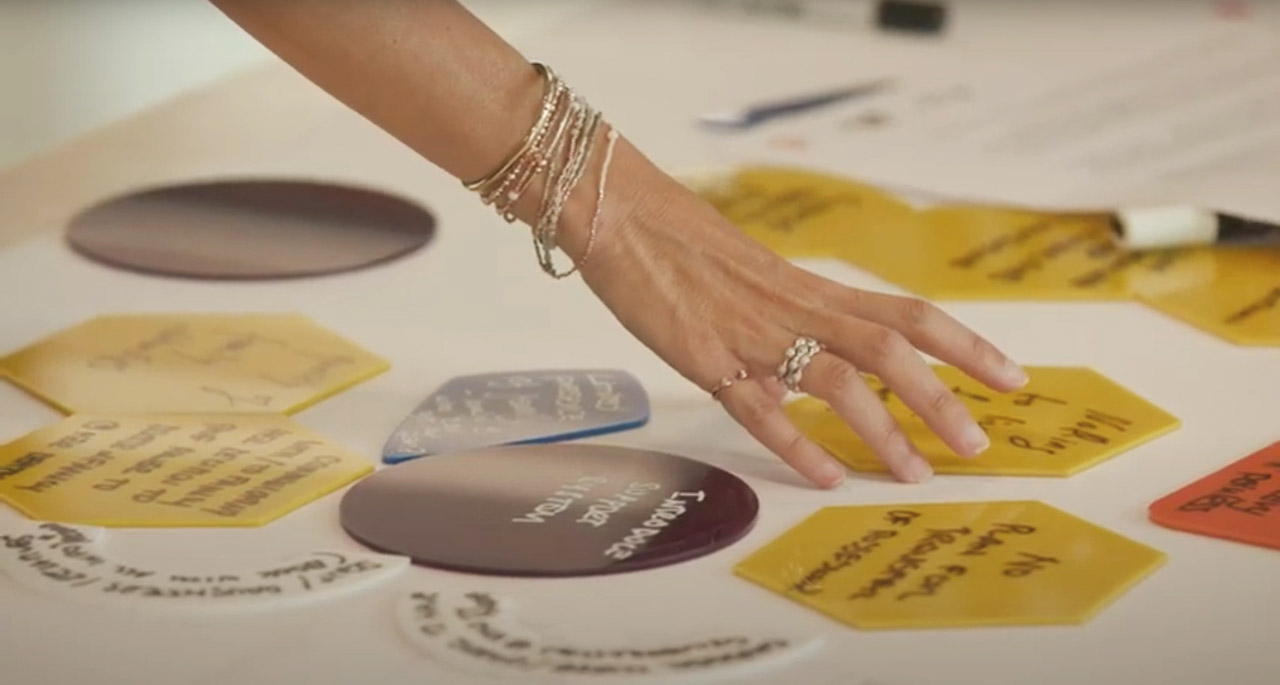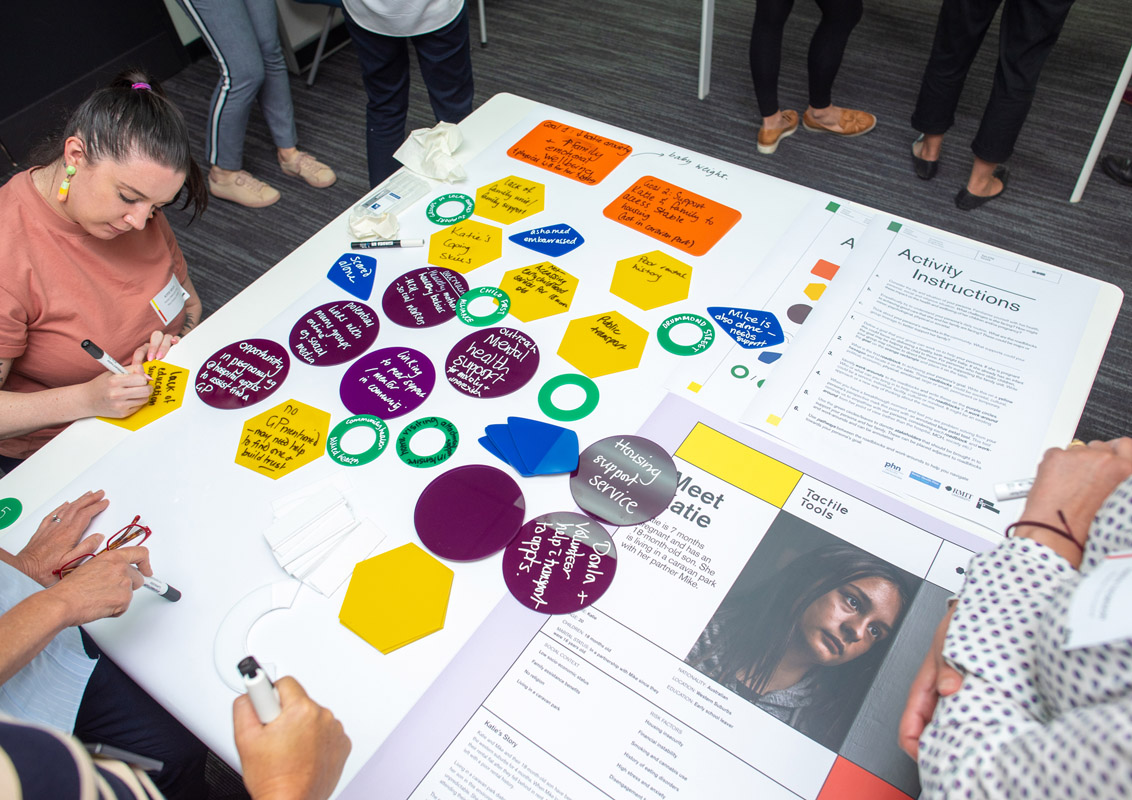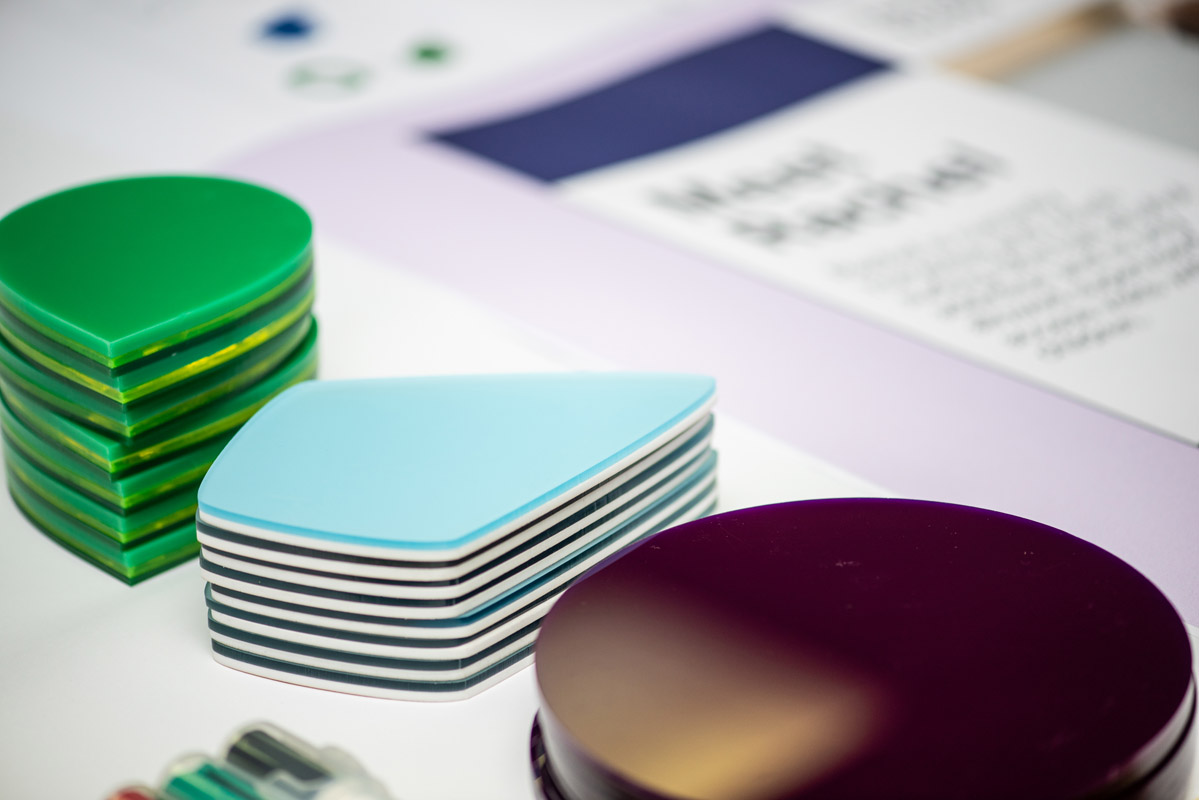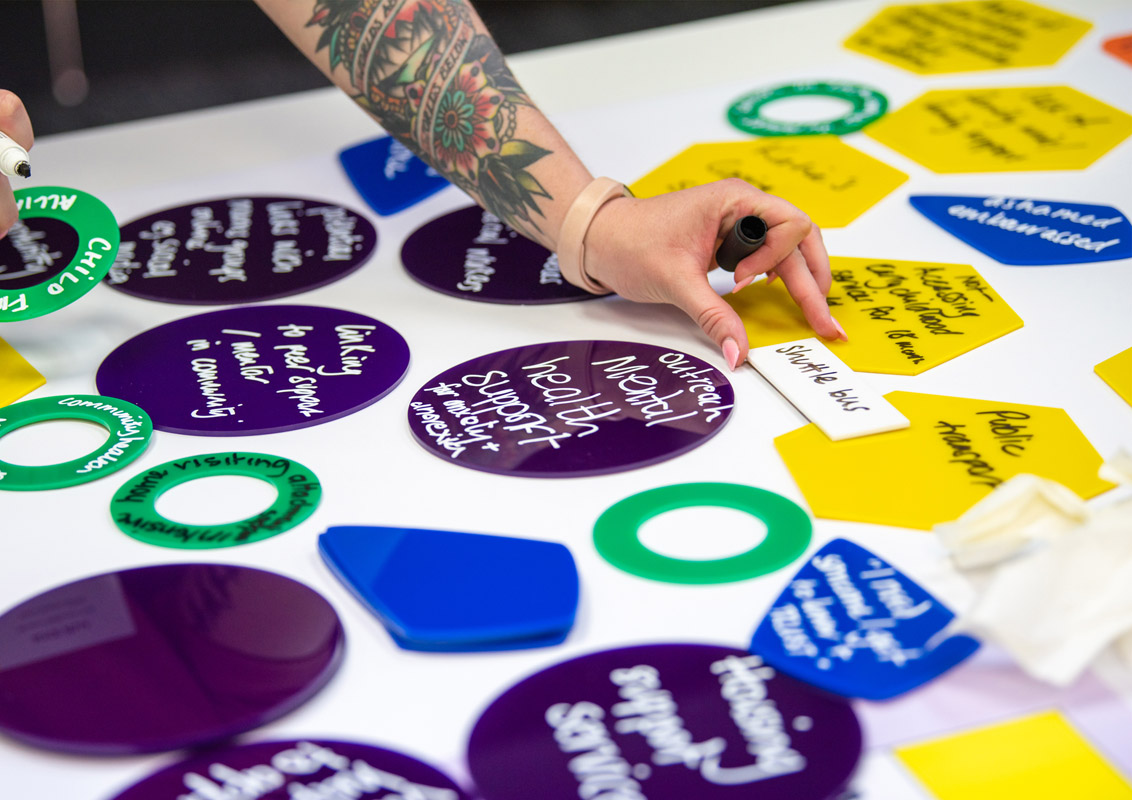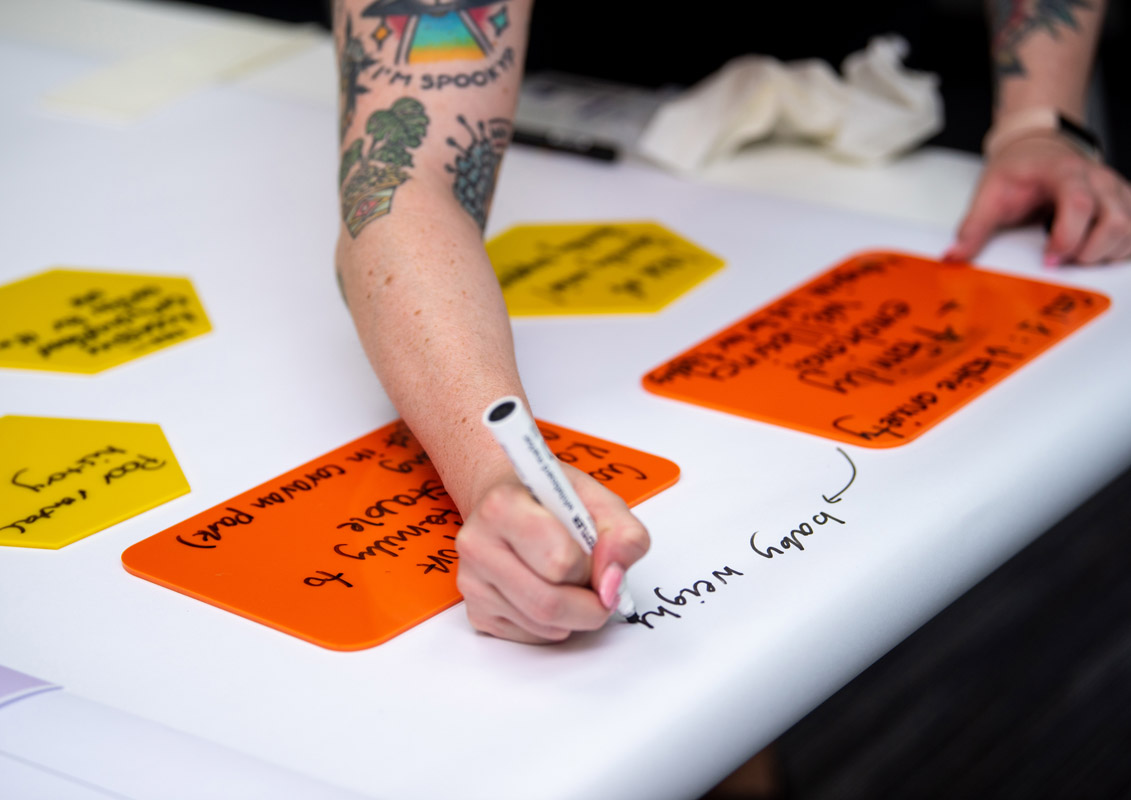The Tactile Tools comprises a set of design artefacts used by interdisciplinary teams to ‘map’ the experience of an individual as they navigate a complex healthcare situation. The toolkit is composed of acrylic ‘tiles’ that represent elements of the healthcare experience (goals, roadblocks, workarounds, empathy, stakeholders and pathways).
The iterative design process followed Donald Schon’s Reflection in Action model, which entailed developing tools and supporting materials; using these in co-design settings; reflecting on the affordances of the method in these scenarios; and iterating the toolkit for the next round of testing.
The Tactile Tools method was iteratively developed over four years in response to a number of complex healthcare challenges:
- 2017: initially, the toolkit was developed for mapping the lived experience of cancer treatment in collaboration with the Olivia Newton-John Cancer, Wellness & Research Centre
- 2018: the method was refined in response to the challenge of redesigning end-of-life experience with Bolton Clarke Aged Care
- 2019: we built upon the toolkit to address the challenges to people seeking to access Voluntary Assisted Dying, with the Victorian Healthcare Association
- 2019: with Young People in Nursing Homes we refined the method to understand the lived experience of consumers with acquired brain injury as they navigated the NDIS and NSW health system
- 2019: method utilised to understand lived experience of disadvantaged families expecting a low birthweight baby with North Western Melbourne Primary Healthcare Network
- 2020: Tactile Tools Digital Toolkit developed to enable researchers from across 7 QUT Schools to visualise the practices and spaces for Health Futures
- 2021: Tactile Tools Digital Toolkit adapted to map the lived experience of consumers seeking care in the Alfred Health eating disorders residential facility
At the conclusion of each of these engagements the method was reflected upon through surveys and reflective practice and iterated for the next challenge.



